Public Transit: Leaving a Smaller Footprint on the Earth
By Michele Reed
michele@cny55.com
Photos by Bill Reed
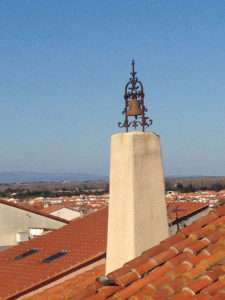
It’s the 50th anniversary of Earth Day, and most of us are old enough to remember where we were April 22, 1970.
Local readers may recall Oswego State students parading a gas-guzzler through the city streets and (as legend has it) burying it in front of Culkin Hall. Syracuse University students and city residents had a “sludge trudge” through the streets to highlight pollution.
Now, with climate change issues front and center in our public consciousness, young people are again leading the way. Activists like Swedish teen Greta Sundberg are urging more sustainable travel, and travelers of all ages are becoming more and more aware of our carbon footprint.
But what are those of us who’ve committed to spending time at a second home, whether as snowbirds in the southern United States or abroad, to do?
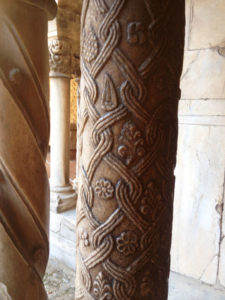
We own a home in France, where we spend six months of every year. Since, unlike Greta, we don’t know a billionaire with an ocean-worthy sailboat (or the fearlessness of youth to cross the Atlantic in one), we must fly to our second home. But once on the ground, we try to be as sustainable as possible. We don’t own a car and get everywhere by foot or on buses or trains.
European public transportation is light years ahead of American versions, with high-speed trains available, even in relatively rural areas like ours, and buses linking towns and villages across France.
Our local bus company recently switched to natural gas-powered vehicles, and many of the routes were consolidated to serve greater areas with fewer buses. After a survey of bus usage, the company now uses smaller, more fuel-efficient vehicles for routes that have fewer riders.
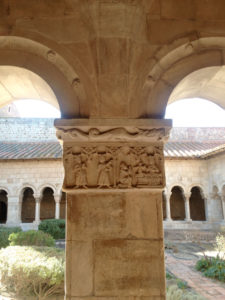
We are fortunate that our home is only a block away from the bus stop, and a 10-minute, 50-cent ride to the city of Beziers. From there we can catch the TGV, or Train Grande Vitesse, the high-speed train, which runs to Paris, Milan or Barcelona several times a day. The Intercite lines take us to cities and towns all over France, and regional transport within Occitanie takes us to even smaller towns and villages not served by the major lines.
This makes getting around cheap and easy, and can lead to unexpected discoveries.
We learned that lesson early on in our French sojourn. We spent three winters in the town of Argeles-sur-Mer, our home base for bus and train adventures.
Sometimes we would make a day of it, like a 5 a.m. to 11 p.m. trip to Avignon, where we saw the Palace of the Popes and the famous Christmas market, before a mad dash through snow-covered streets with a Frenchman as our guide, to catch the last train of the day back home.
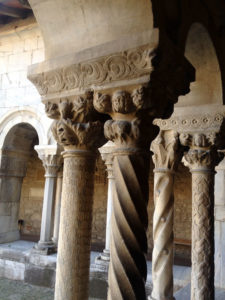
Other days we spent a leisurely morning shopping at the farmers market, enjoying a fresh lunch at home, and hopping the local bus for an afternoon of adventure. We’d take the bus with no real plan in mind, and see what surprise awaited us at a random stop.
One such adventure landed us in the nearby town of Elne, where we wandered a medieval town rich in history, art and intrigue.
Our goal was to see Elne’s cathedral and its cloister, renowned for its carvings. Our first stop was a climb up to the ramparts atop the cathedral. The views were amazing! We could see the Catalans’ holy mountain of Canigou, which is covered in snow most of the year. The Pyrenees Mountains were in plain sight on the horizon, so defenders could scan the peaks for invaders from Spain or smugglers bringing over tobacco and other contraband through the mountain passes. The Mediterranean Sea also was clearly visible, so our medieval defenders would have seen any threat coming from land, sea or mountain.
The cloister was like a history lesson in architecture. As we proceeded around it, we moved in time from the 600s and their more primitive carvings to the Gothic area, from the 12th and 13th century. Carvings there were finer and featured trailing vines, animals and intricate patterns.
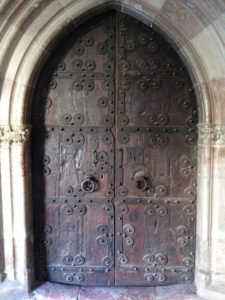
While the carvings were amazing, we also marveled — once again — that it was Feb. 13 and we were in shirtsleeves, enjoying roses blooming in the center garden.
A tiny history museum amazed us with the depth of history in this tiny village, occupied since Neolithic times. Hannibal pitched his camp there on his way to cross the Alps with his elephants. A mural boasted Elne’s 27 centuries of history, and the items on display were a remarkably eclectic record of nearly three millennia. Deeds, military dispatches, chronicles were all set out in display cases. One document was dated 1492 – Elne had already been around for more than a thousand years when America was discovered.
Out in the bright Mediterranean sunlight again, we wandered through the village, marveling at the pink-and-gray striped marble for which the area is known, paving some of the streets.
A short bus ride back, and we were home in time to enjoy a dinner of the fresh fruits and vegetables we had bought that morning at market, along with a nice glass of the local red.
Not a bad way to do our part to lessen our carbon footprint.

